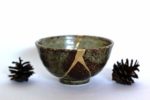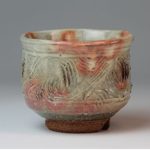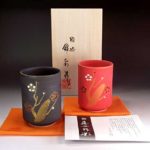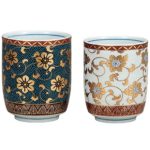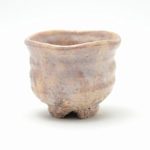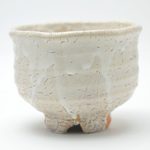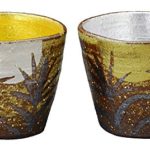Japanese pottery Hagi ware sets of yunomi (tea cups) and kyusu (teapot)
Why don’t you enjoy drinking Japanese green tea while feeling the mind of “wabi” and “sabi”? They which originated from the tea ceremony express one of the Japanese cultures.
The gorgeous ceramic wares Imari (Arita) or Kutani have been popular around the world ever since Momoyama Period (1568-1600).
But Hagi-yaki was invented for the tea ceremony originally. So it gets rid of unnecessary things. Simple and subdued with tanned, gray, or white colors.
If the tea cups get cracked…
Hagi ware
Origin
During the Age of Civil Wars, the high‐powered daimyos, Oda Nobunaga (1534-1582) and Toyotomi Hideyoshi (1537-1598) became the patron of Sen-no Riyu (1522-1591).
He established the Japanese tea ceremony and pursued the idea of “wabi” and “sabi”. And Mōri Terumoto (1553-1625) also has the association with the great tea master. He had often thought to create a new Japanese pottery for tea bowls.
From 1592 to 1598, the Japanese armies invaded the Korean Peninsula by the order of Toyotomi Hideyoshi. Though the invasion fell through, the daimyos including Terumoto taken the Korean pottery from the country to Japan. Because the Korean potteries were most popular for the tea ceremony.
The feudal lord of Hagi Domain (today’s Yamatuchi Prefecture) Mōri Terumoto treated the potteries Lee Shakuko and Lee Kei (brother) with hospitality and made them create a pottery of Hagi. It was the origin of Hagi-yaki.
Features
The texture of a Hagi ware is soft and plump. Most of the wares don’t have painting. They express the beauty with only the shapes and the colors and patterns of the clay and glaze.
The craftsmen of the Hagi ware mix three soil, Mishima (red), Daido (gray), and Mitake (white). And they mainly use the loquat color glaze or white bush clover color glaze.
The more you use it the more they change the colors. That is called as “various changes of Hagi ware”.
See other pages of Hagi-yaki
Hagi ware Japapese pottery tea sets
!Limited Stocks!
 |
 |
 |
 |
 |
 |
 |
 |
 |
 |
 |
 |


